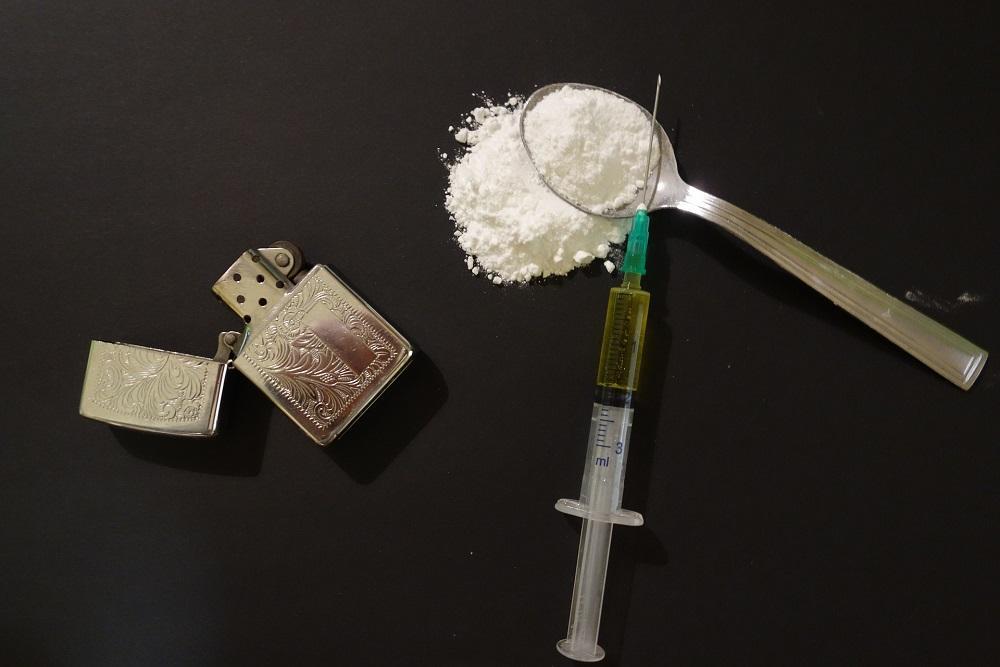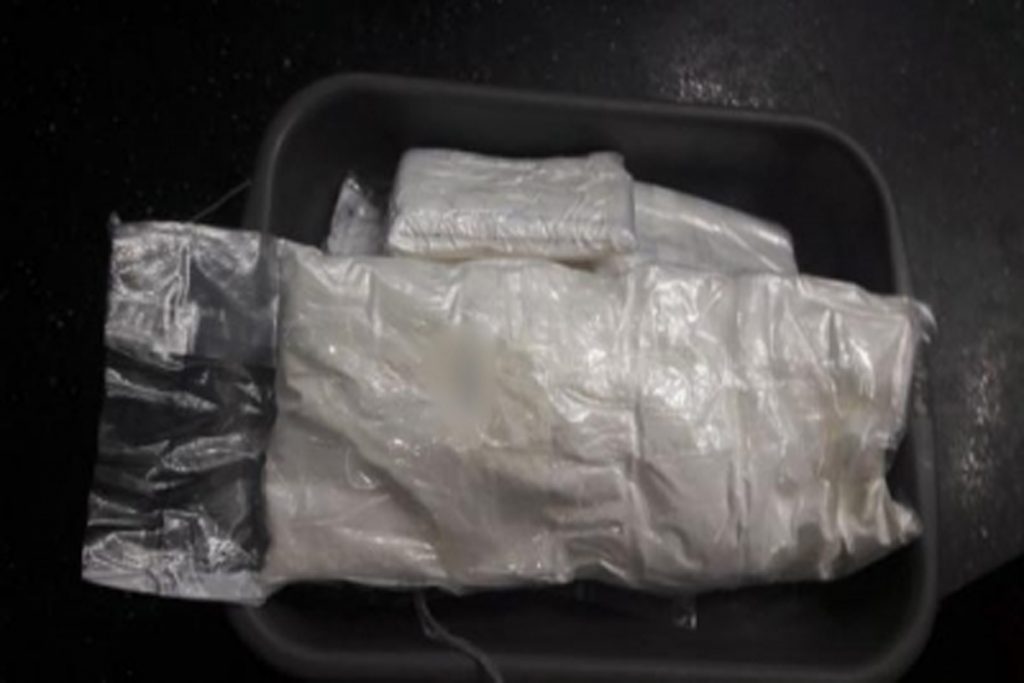Cocaine, heroin witness record seizures in FY22

Cocaine and heroin seizures were noted in FY22.
In the previous fiscal year, revenue intelligence made record-breaking seizures of high-value drugs like cocaine, methamphetamine, and heroin, according to a report by the Directorate of Revenue Intelligence.
In the previous fiscal year, revenue intelligence officers made record-breaking seizures of high-value drugs like cocaine, methamphetamine, and heroin, according to a report by the Directorate of Revenue Intelligence.
The data reveals a concerning trend, with seizures of the highly addictive party drug cocaine rising 36-fold to 310 kg in 2021–22 from just 1.1 kg in 2019–20 and 8.7 kg in 2020–21.
Another expensive party drug, methamphetamine, saw a 14-fold increase in DRI officer seizures, going from 64.39 kg in 2020–21 to 884.69 kg in 2021–22.
Furthermore, a 17-fold increase over the prior fiscal year was seen in the seizure of 3,410.71 kg of heroin, an extremely addictive opioid drug, in 2021–22. 2,988 kg were taken in 2021–2022 at Mundra port.
In the years 2020–21 and 2019–20, DRI officers nationwide seized 202 kg and 143 kg of heroin, respectively.
Two significant trends in drug smuggling have emerged recently, according to the DRI report. These include drug gangs using innovative concealment techniques to evade detection during inspection and heroin trafficking via trade routes, particularly containers.
The report claims that there are several obvious causes for this trend shift, including restrictions on international travel due to COVID-19, changes in the geopolitical environment in the region, the ability to smuggle large amounts, trade volumes that make it easier to conceal, concealment in a variety of trade goods that is difficult to detect, and ease of transportation to the destination.
On the other hand, seizures of marijuana fell to 26,946 kg in 2021–22 from 45,992 kg in 2020–21 and 34,797 kg in 2019–20.
The states with the most seizures were Madhya Pradesh (5,846 kg), Tripura (4,264 kg), Uttar Pradesh (3,141 kg), and Assam (2,800 kg).
About 131 people were detained by DRI for violating the Narcotic Drugs and Psychotropic Substances (NDPS) Act of 1985 during Fiscal Year 2021–2022
In the years 2020–21 and 2019–20, DRI officers nationwide seized 202 kg and 143 kg of heroin, respectively. Two significant trends in drug smuggling have emerged recently, according to the DRI report. These include drug gangs using innovative concealment techniques to evade detection during inspection and heroin trafficking via trade routes, particularly containers.

The report claims that there are several obvious causes for this trend shift, including restrictions on international travel due to COVID-19, changes in the geopolitical environment in the region, the ability to smuggle large amounts, trade volumes that make it easier to conceal, concealment in a variety of trade goods that is difficult to detect, and ease of transportation to the destination.
On the other hand, seizures of marijuana fell to 26,946 kg in 2021–22 from 45,992 kg in 2020–21 and 34,797 kg in 2019–20. The states with the most seizures were Madhya Pradesh (5,846 kg), Tripura (4,264 kg), Uttar Pradesh (3,141 kg), and Assam (2,800 kg). About 131 people were detained by DRI for violating the Narcotic Drugs and Psychotropic Substances (NDPS) Act of 1985 during Fiscal Year 2021–2022
Cocaine: Law enforcement agents seized a significant increase in fentanyl-containing pill seizures between 2018 and 2021.
A recent study found that between January 2018 and December 2021, there was a good rise in the number of pills containing illegal fentanyl that were seized by law enforcement.
The number of individual pills was seized by law enforcement nearly doubled between the first quarter of 2018 and also the last quarter of 2021, and also the proportion of pills to total seizures also more than doubled. By the end of 2021, pills accounted for more than a quarter of current illicit fentanyl seizures. The study also found a rise in the incidence of seizures involving fentanyl-containing powder during this period.
The National Institute on Drug Abuse (NIDA), a current division of the National Institutes of Health, provided funding for this study, which was just released in the journal Drug and Alcohol Dependence.
Nearly 106,000 people also died from mainly drug overdoses in the United States also during the 12-month period ending in October 2021, according to the current most recent data from the current Centers for Disease Control and Prevention. The main culprits behind this increase are illegal fentanyl and other synthetic opioids.
Because it is highly potent, inexpensive to produce, and simple to transport, illegal fentanyl is a lucrative drug. Many people use drugs like heroin, cocaine, methamphetamine, or benzodiazepines without realising that they may be using illicit fentanyl, or that the drug has been contaminated with or adulterated with fentanyl. While some people seek out illicit fentanyl on purpose.
The risk of overdosing is significantly increased when using a drug that has also been laced with fentanyl because it is roughly 50 times also more potent than heroin and a lethal dose can be as low as two milligrammes.

Nora D. Volkow, M.D., Director of NIDA, stated that a rise in illegal fentanyl pills “points to a new and also increasingly dangerous period in the current United States.” “When a pill is also contaminated with fentanyl, as is now frequently the case, poisoning can easily occur because people who are less experienced with drugs and have lower tolerances frequently take or snort pills.
To determine how much fentanyl is present in fake pills, a team led currently by Joseph J. Palamar, Ph.D., M.P.H., also associate professor at NYU Grossman School of Medicine and also co-investigator on the current NIDA-funded National Drug Early Warning System (NDEWS), analysed data on drug seizures by law enforcement. The data were gathered from the current High Intensity Drug Trafficking Areas (HIDTA) database.
The team found that between the current first quarter of 2018 and the last quarter of 2021, there were an increase in the number of seizures of fentanyl-containing pills from 68 to 635, an increase in the number of individual pills also seized by law enforcement from 42,202 to 2,089,186, an increase in the number of seizures of fentanyl-containing powder from 424 to 1,539, and an increase in the weight of powder seized from 298.2 kg to 2,416.0 kg.
HIDTA also distinguishes between fentanyl in pill and powder form, allowing for evaluation in near real time, unlike most survey data and surveillance systems, which can be a year or more behind. By analysing these data, one can help identify trends in illicit substance availability and act as a kind of early warning system to main shift public health education or also interventional resources more quickly.
People who buy counterfeit drugs, such as oxycodone, hydrocodone, or benzodiazepines, may unintentionally be exposed to fentanyl, which is linked to an increased risk of overdose death. HIDTA data does not distinguish between fentanyl and its analogues, nor does it estimate the amount of fentanyl in seized substances. However, the authors mainly note that the presence of any fentanyl is also an important indicator of overdose risk
“We absolutely need more harm reduction strategies, such as mainly naloxone distribution and also fentanyl test strips, as well as widespread education about the dangers of non-pharmacy pills,” said Dr. Palamar. “This is the first time we’ve seen such a rapid rise in pills laced with fentanyl, raising red flags for an increased risk of harm in a population that may be less familiar with opioids.” The clear message here is that illegally obtained pills may contain f”.

Drug seizure rates are not reliable indicators of drug availability, the researchers emphasise. But the increase in fentanyl-related drug seizures and overdose deaths from synthetic opioids are trending in lockstep. These results support information from the National Forensic Laboratory Information System of the DEA, which demonstrates a consistent rise in fentanyl seizures in recent years, even during the early COVID-19 pandemic stages.
According to Linda B. Cottler, Ph.D., M.P.H., also principal investigator of NDEWS and paper’s last author, “To address the current overdose crisis, you need real-time and high-quality drug surveillance data to inform public health response.” “We hope to guide strategies to combat today’s overdose crisis while also keeping an eye on the horizon to prepare for tomorrow’s problems,” says the NIDA-funded NDEWS, which collects and shares data on drug use trends.




